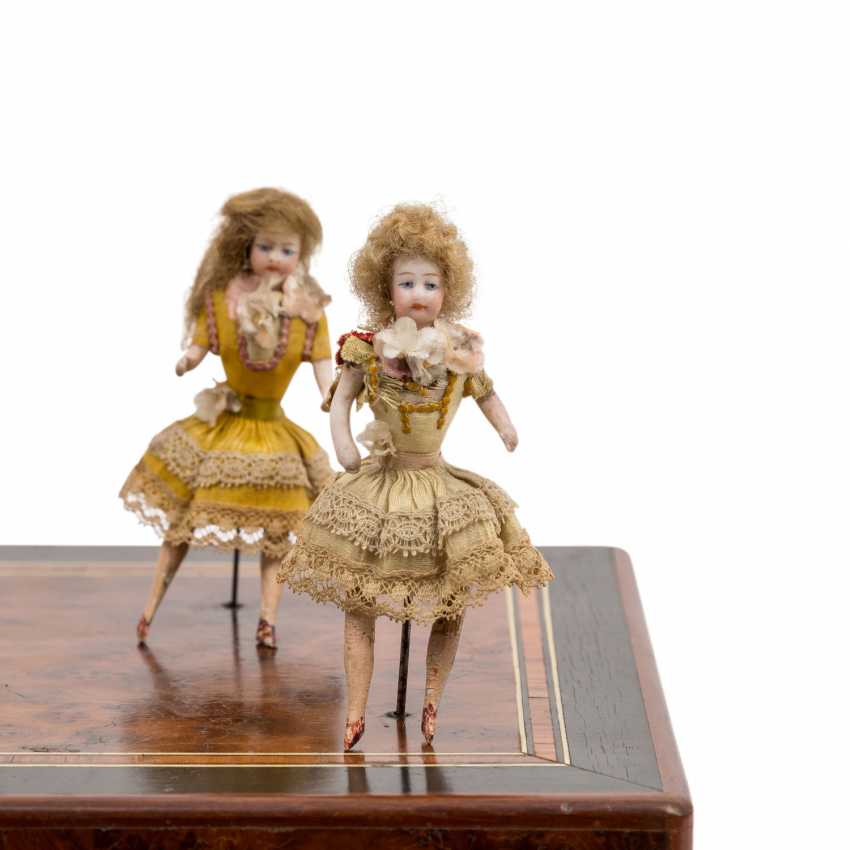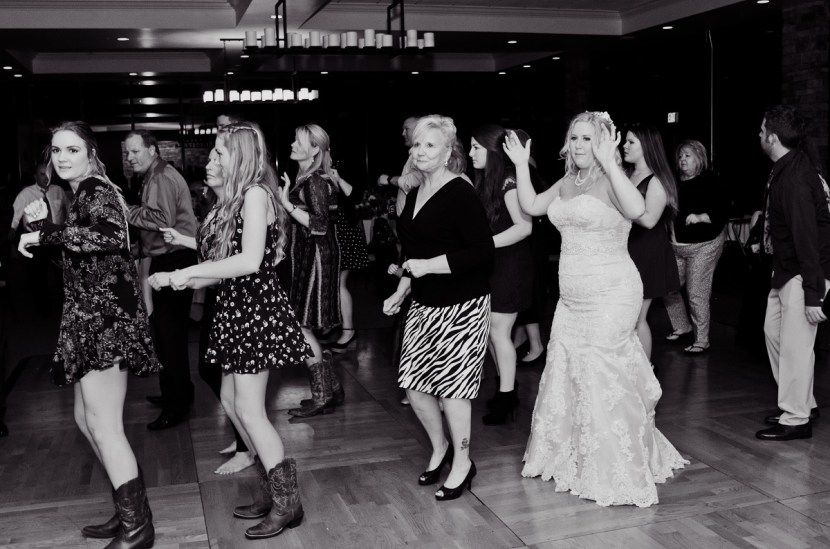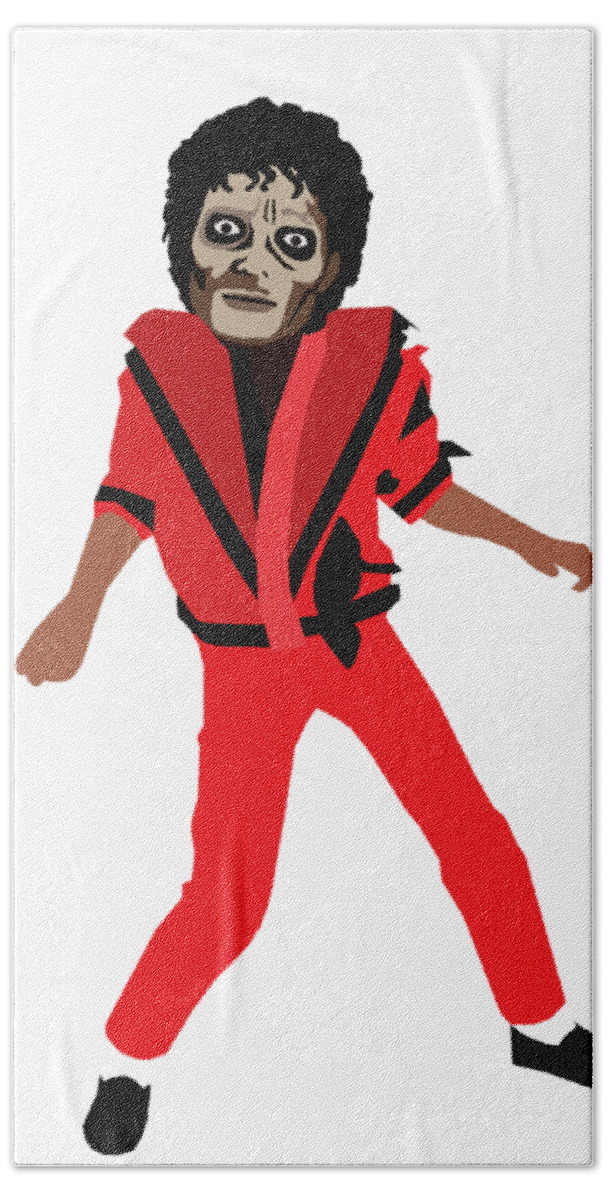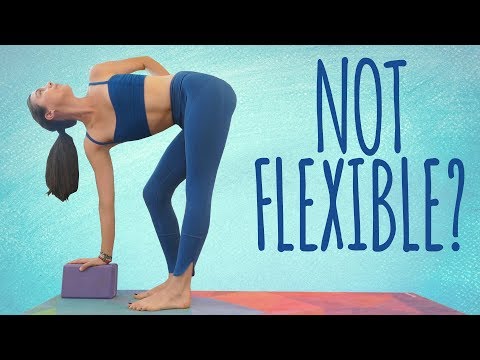Teaching kids how to dance
Teaching Tips: Dance Choreography for Kids
March 10, 2016 Choreography Brandi Vickers
While kindergartners won’t be performing “Giselle” anytime soon, you can teach them the basic building blocks of learning choreography that will set them up for success in and outside of the studio. The key is understanding the developmental stage young children are in and adapting your teaching style to work with this level of learning, not against it. Here are a few tips to use when putting together dance choreography for kids.
Keep It Simple
Kids in or entering kindergarten LOVE to move around and have fun in dance class, but you can’t expect them to always remember extended choreography. Five to six-year-olds have a better grasp on movement than toddlers, but they can’t grasp routines as well as grade school-age children.
As a result of participating in a dance class, students in kindergarten through second grade should be able to copy other people’s shapes and patterns, perform basic elements of dance, such as making a round shape or jumping in a certain direction, and describe dance movements in general terms, according to the book, “Teaching Children Dance.”
Third- through fifth-grade children, on the other hand, should be able to understand various choreographic structures, describe others’ movements using simple dance terms and reproduce choreography with multiple sequences.
Simple, brief choreography that only uses basic movements are best suited to the five- and six-years-old age group, and make sure you break down each step into easy-to-digest elements.
Recognize Rhythm
Young children have to learn not only how to do certain movements, but also how to move in time with music. In this article, Chasta (the creator of DanceExec) breaks down some ideas for rhythm activities to help develop good counting.
In this article, Chasta (the creator of DanceExec) breaks down some ideas for rhythm activities to help develop good counting.
Prioritize strengthening your students’ sense of rhythm and their ability to match their movements to different speeds. This approach will better set them up for more advanced classes later on.
Build Repetition into Choreography
Young children need structure to thrive in class, and choreographer Jenny Duffy noted that songs and movement are often used in kindergarten classes to signal when it’s time to transition from one activity to another. She recommended that dance instructors use a similar approach when creating choreography for younger students.
She advised using the same movements during the chorus of a song, which makes it easier for children to learn choreography and also helps them develop musicality.
Reward Students
Positive reinforcement makes all the difference when teaching choreography to younger students. Five to six-year-olds will respond better to praise, and criticism on the way students are doing a certain movement should be used sparingly. As Donna Donna Furmanek wrote in her paper, “Classroom Choreography: Enhancing Learning Through Movement:”
Five to six-year-olds will respond better to praise, and criticism on the way students are doing a certain movement should be used sparingly. As Donna Donna Furmanek wrote in her paper, “Classroom Choreography: Enhancing Learning Through Movement:”
“It is important that teachers acknowledge children’s efforts and participation more often than noting whether or not children are doing the movement correctly.”
“Positive reinforcement makes all the difference.”
A reward system is a great way to boost this positive reinforcement. One dance teacher on Dance.net wrote about how she creates a chart for each student and then gives them sticker or other small prize like a plastic gold medal when they learn a new step.
Focus on Fun
“You shouldn’t expect to teach young children technique,” writes Holly Shaw in a post for 365Dances. Kindergarten-age students are high-energy and are still learning how to move their bodies, so making dance class as fun as possible will be more beneficial for young children in the long run.
“Really what you should be focusing on at this point is the sheer joy of moving and learning their bodies,” says Shaw. “Keep the expectations low.”
tweet
Practical and Effective Techniques to Teach Dance to Young Children
Conducting dance classes for very young children in the age range of 3 to 6 requires a tremendous amount of managing, engaging, and interacting skills. The dynamic setting of a dance class environment can make teaching very challenging and need the most preparation, energy, and patience.
Before we delve into what works and what tips can be implemented to get AND keep that attention, here are just a couple of reasons why you should sign up your interested preschooler in a dance class -
Dance helps Young Children Learn Literacy Skills - Literacy requires you to think, create and then share information," she says. "When children are in a dance class they are thinking about what do and where go and what the teacher says.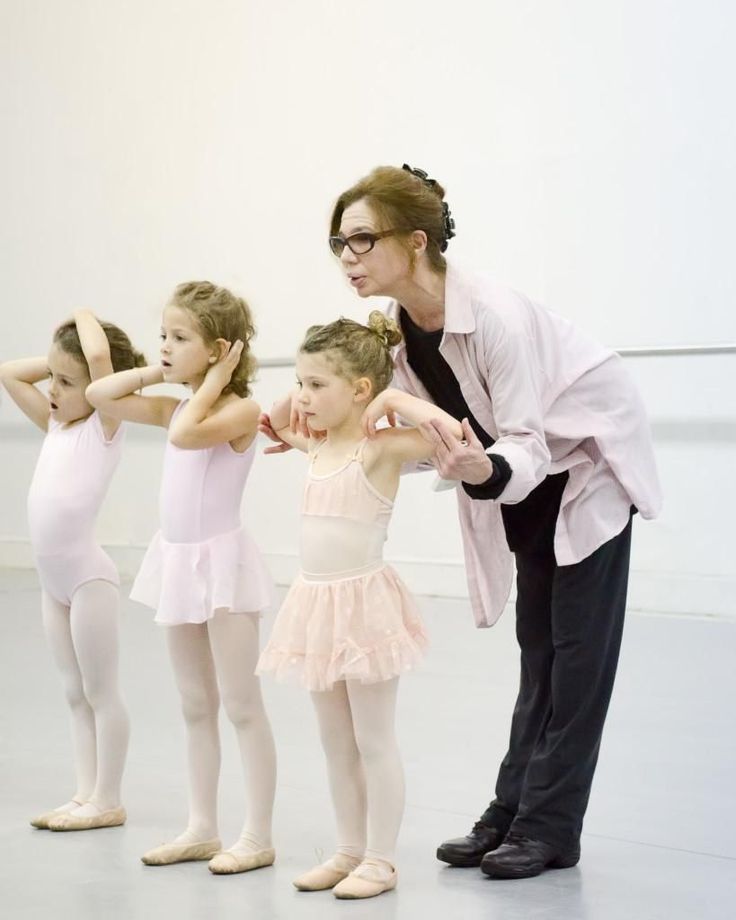 They are also creating during free time when the agenda sometimes is just an experiment by dancing by yourself. Often the last 10 minutes of the class is about experimenting and dancing by themselves. The children are also sharing information like emotions and feelings which is a form of communication.
They are also creating during free time when the agenda sometimes is just an experiment by dancing by yourself. Often the last 10 minutes of the class is about experimenting and dancing by themselves. The children are also sharing information like emotions and feelings which is a form of communication.
Dance Classes help with Memory and Patience - This directly impacts their performance in school. Children are exposed to different elements in a dance class - memorizing things, taking direction, thinking creatively, all of this comes handy and get applied to other areas of their school life. The dance involves a lot of practice and perseverance. Practicing steps over and over again, persistently until they get it right increases their patience.
Below are 10 tips for dealing with the short attention spans and behavioral challenges typical of the preschool (3-6 years) age group — and maybe even older!
1. Keep the Class Moving
A common mistake in teaching classes with young children is to spend too much time on a single activity. Kids this age don't have a very long attention span, two minutes is about as long as you can stretch one activity before moving on to something else. A 45 min class is the maximum a dance class can last and that too when things are fast paced and full of action. If there are more than eight children in the class, you most definitely need an assistant!
Kids this age don't have a very long attention span, two minutes is about as long as you can stretch one activity before moving on to something else. A 45 min class is the maximum a dance class can last and that too when things are fast paced and full of action. If there are more than eight children in the class, you most definitely need an assistant!
2. Repetition -
Songs and movement are often used in kindergarten classes to signal when it's time to transition from one activity to another. Use the same actions during the chorus of a song to make it easier for children to learn choreography and develop musicality.
3. Offer Choice
In this age group, children are learning to express their thoughts and take independent decisions. As a dance teacher, offer opportunities for children to make decisions regarding their movement; for instance, they may choose between dancing sharply or smoothly (quickly/slowly, happily/sadly) around the room.
4.
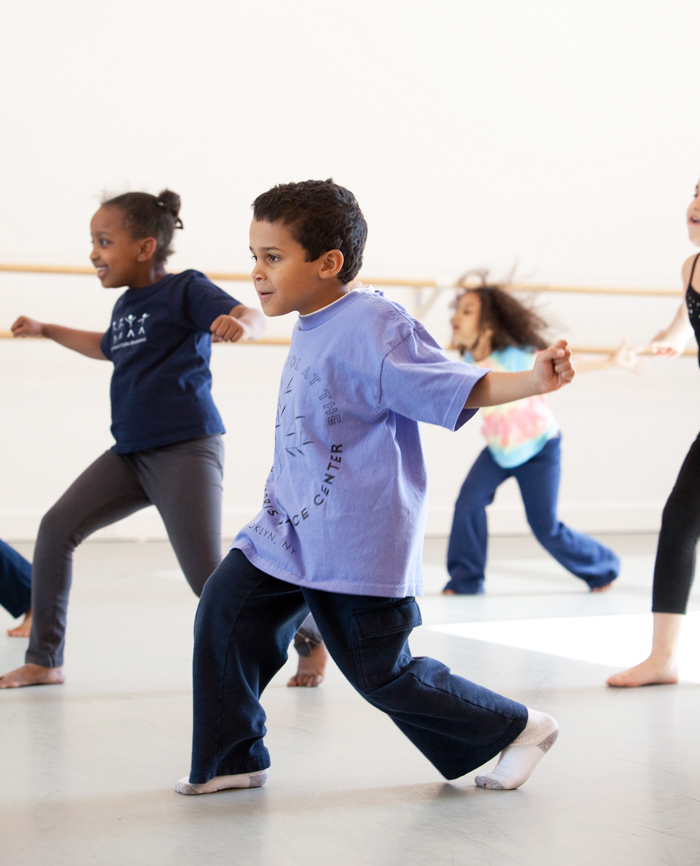 Explain Each Step Clearly -
Explain Each Step Clearly -Each step in dance needs to be explained clearly and to cater to different children, you have to teach in all three primary learning styles - visual, auditory and kin-aesthetic (movement). If you're not explaining it precisely as you're doing the steps, you may miss out on reaching some children.
5. Encouragement -
Remember to build confidence in the kids, by explaining that it is ok to make mistakes as everyone makes them. Explain that you don't expect them to get the dance steps in the first lesson and it may take some more classes before they start getting comfortable with the steps.
6. Reward Students
Positive reinforcement stickers, stars, etc.,) makes all the difference when teaching dance to younger students. Five to six-year-olds will respond better to praise, and criticism on the way students are doing a particular movement or behavior should be used sparingly and subtly.
7. Focus on Fun
Bring the energy up in the class by giving the kids plenty of chances to giggle! Sound effects and exaggerated moves pique their interest and, and plain entertain them.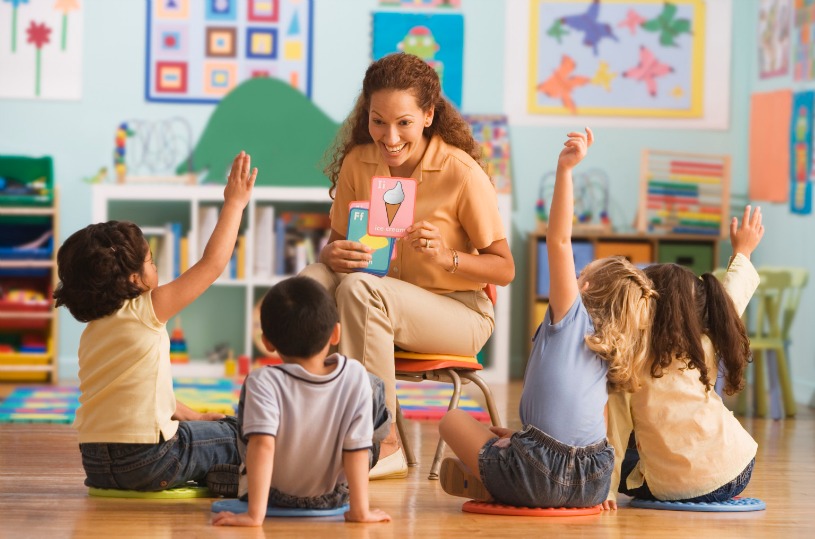 Once they start laughing and having fun, they all come alive and makes a class interactive and fun.
Once they start laughing and having fun, they all come alive and makes a class interactive and fun.
8. Offer Positive Feedback at Every Opportunity -
Actively be on the lookout for things that are being done well as this gives the class a chance to model the appropriate behavior. Looking for that one child who is doing SOMETHING (anything) right and singling them out is a more effective strategy than reprimanding the whole class (an example is "beautiful arms, Lisa!”)
9. Give Them Something to do while Waiting their Turn -
Waiting for a turn may make some children anxious or plain jittery. Help them calm down by giving them something to do or hold while they wait their turn. Offer the next child in line something sensory like scarves (or a stuffed animal) to hold until it is his or her turn, at which time they pass the object to the person behind them who is waiting.
10. Participate and Model Behavior -
Young children take all of their cues from you and so if you are asking them to pretend they are in a dark cave as they creep around the room, then you must be in that cave with them at least part of the time.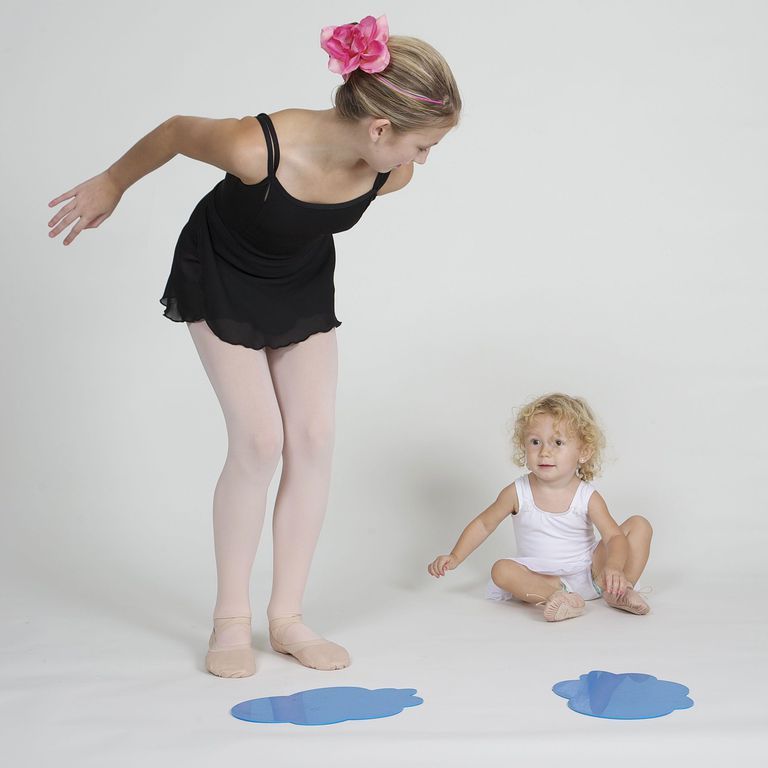
When children in the ages 3-5 are enrolled in a dance class, especially ballet, the focus is on cultivating creative movement rather than showing the specific moves associated with a particular dance form. In this example of ballet, around the age of 6, the classes are called "pre-ballet," which is when the students are ready to stand at the barre and learn the mechanics of alignment and ballet positions.
Creative movement can be taught many different ways—and each dance teacher from her own experience has used a variety of methods and has had to improvise on the go just as often as they have come with a prepared structure
1. When in a circle, engage the children in stretching by having them flex and point the toes and fly like a butterfly using pretty arms with the soles of the feet together.
2. Incorporate yoga 'asanas' and have the kids lie on their bellies with their heads towards the center of the circle, practicing pushing up onto their hands and keeping their necks long (like a cobra in yoga), and lifting their heads and their feet off the ground and flying like Superman.
3. Props such as colorful scarves are incredibly helpful to teach specific basic movements - hopping on one foot, galloping, skipping, walking toe to heel like on a tightrope, etc.
4. Add layers to the movement - Keep skill practice interesting by layering your instruction with imagery. Find occasions to play pretend that will also enhance their understanding. For port de bras exercise, you can ask children to pretend that the wind is blowing their arms out (for demi second), or encourage them to become pancakes and "flip" as they practice three-step turns.
5. When you feel like you're losing them, go back to imitating an animal to get their attention again. Take light springy steps like a cat, heavy steps like a gorilla, etc.
To teach dance to preschoolers requires more than a teaching degree in dance! A natural aptitude coupled with some smart strategies can keep them coming back for more - and there is nothing more delightful than seeing little ones perform on stage, making it all a highly worthwhile cause.
How to teach a child to dance at home
Dancing is a fun and positive activity that has absolutely no age restrictions. Already in the first year of their life, babies make their first dance movements to the music - they clap, squat, stomp their feet. As children grow older and develop motor skills, they are able to master more and more complex elements of dance, but for this they need the help and support of their parents.
We stimulate the desire to dance
Having noticed a preschooler's interest in dancing, mothers and fathers try to develop it and, as a rule, enroll the child in classes at dance studios. Moreover, many parents simply do not know how to teach their child to dance at home on their own, so they prefer to leave it in the hands of experienced coaches. Such a decision is logical and rational if you want to "grow" a professional dancer out of your baby. In most cases, namely for general development and just pleasure, classes with a child of 3-6 years old can be carried out at home.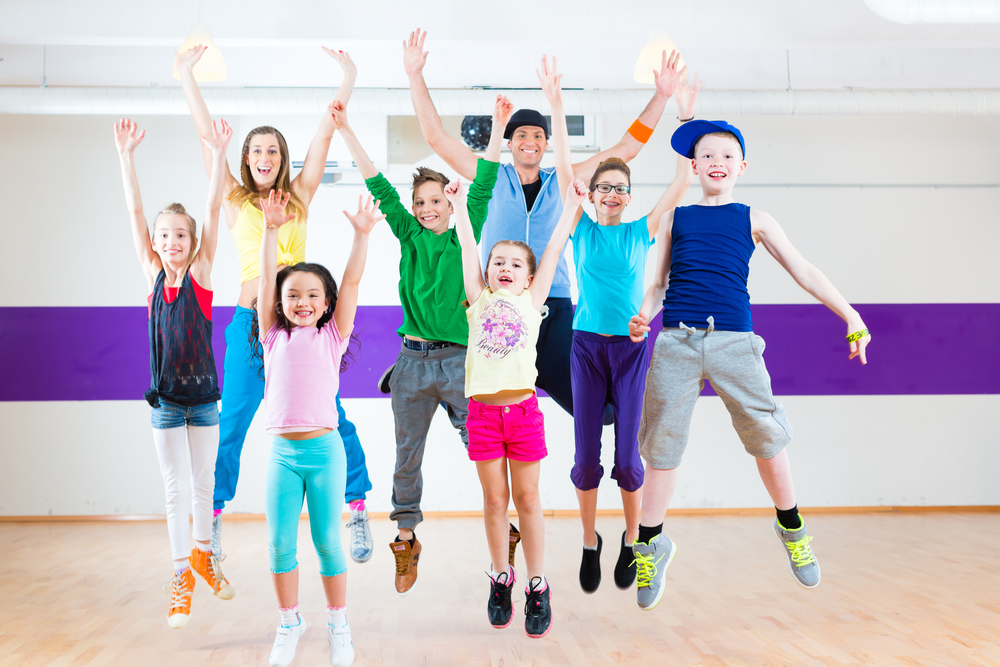
Parents need to remember and understand that dance is, first of all, a way of self-expression. An impromptu free dance reflects the characteristics of a person’s character, his temperament. Each child dances in their own way: someone jumps rhythmically to the beat of the music, someone modestly shifts from foot to foot, and someone demonstrates original movements. The task of parents is not to "reshape" their baby's dance style, but to help him develop his potential and become liberated, if necessary.
Moms and dads do not need to schedule classes with their baby - the beauty of home dancing is that you can do it at any time. Heard a rhythmic song on the radio - dance, clean the house to the music - find time for dancing. With a child of 3-4 years old, it is not even necessary to learn specific dances, because. at this age, it is enough to simply develop general musicality, plasticity and a sense of rhythm.
It is very important to decide on the choice of musical material that stimulates the child's desire to dance.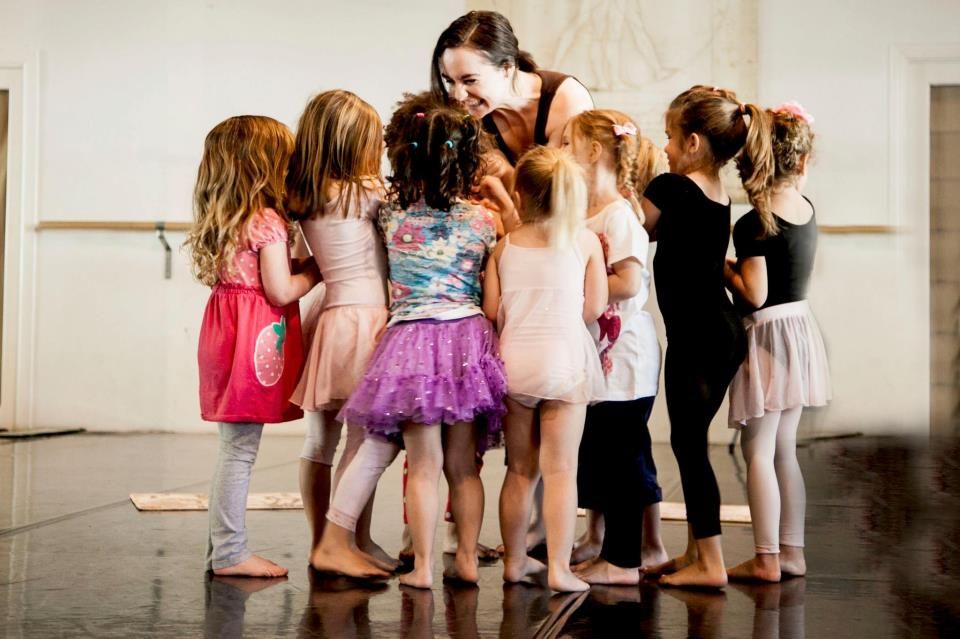 Watch the baby's reaction to individual songs - some compositions will make him feel sad, and some will lift him up and make him dance.
Watch the baby's reaction to individual songs - some compositions will make him feel sad, and some will lift him up and make him dance.
From easy to hard
Preschoolers soak up information at an incredible rate, so don't be surprised if you see your toddler diligently copying dance moves from a recent video clip. Children are open to new knowledge and skills, but it will take some time to master them. If a child fails to reproduce the dance he likes, it is necessary to support him and help him learn the movements. This should be done gradually, without pushing and, moreover, without criticizing the baby.
Some parents are in a hurry to choose the right dance style for their child right away. Moreover, the decisive factor is usually the personal preferences of mom and dad, and not the desire of the baby. It is important to understand here that dancing is creativity and a way of self-expression, so the right to choose still belongs to the child himself.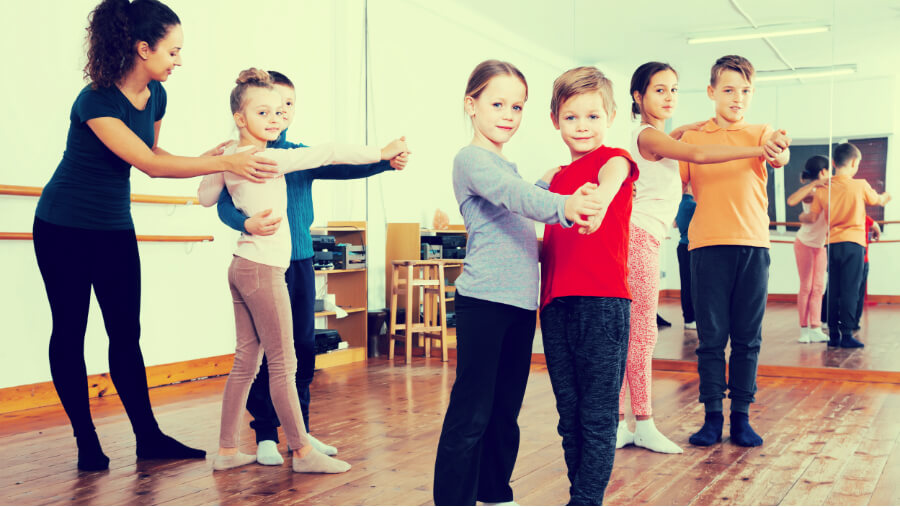 Perhaps the kid does not want to limit himself to one style at all and dances, rather, for pleasure, and not to achieve a certain result.
Perhaps the kid does not want to limit himself to one style at all and dances, rather, for pleasure, and not to achieve a certain result.
The process of teaching a child to dance should be exciting, presented in a playful way. You can start with improvisations - just turn on the music, dance yourself and invite your baby to join you. Already at this stage, it is possible to assess the general potential of a preschooler, as well as the degree of his enthusiasm and sense of rhythm. Gradually move on to learning easy dance moves:
- turns;
- jumping;
- steps;
- handclaps;
- inflows;
- rocking from side to side.
For an adult, such elements seem very simple, but children aged 3-4 years have to work hard to perform them correctly. Be sure to demonstrate all the movements yourself and encourage the baby, even if he does not perform them quite confidently.
Gradually begin to "link" the individual elements into a dance - combine them using stomps and claps as transitions.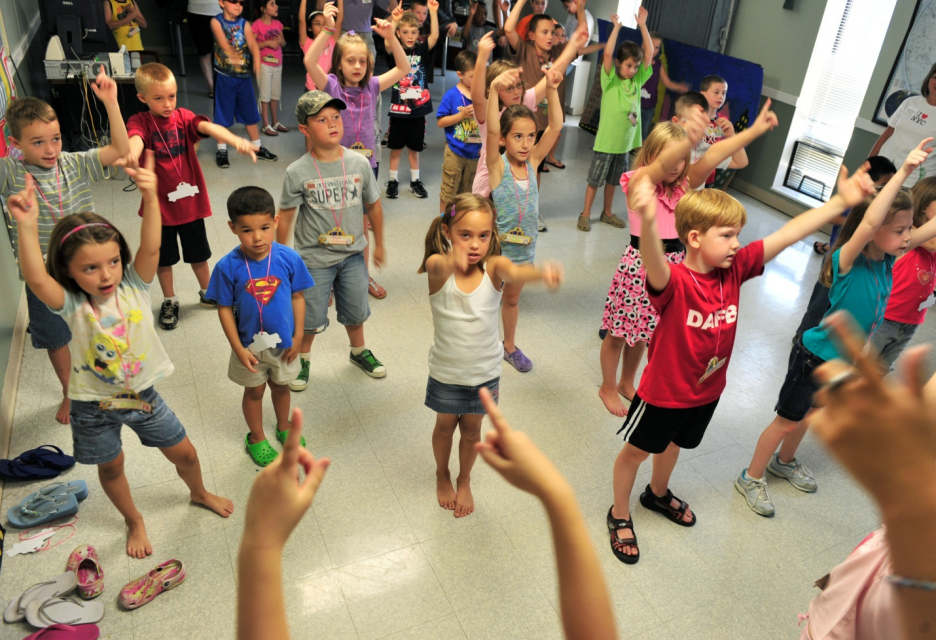 Learning even such easy dances develops the attention, memory and coordination of the child, which is very important at preschool age. The main thing is not to get hung up on the quality of movements and let the baby enjoy the process.
Learning even such easy dances develops the attention, memory and coordination of the child, which is very important at preschool age. The main thing is not to get hung up on the quality of movements and let the baby enjoy the process.
And a few more tips for parents helping their child learn to dance:
- Encourage your child to dance . Give compliments, praise, but do not overdo it - a few words of praise will be enough to cheer up the baby.
- Choose dances that suit your child's temperament . It is difficult for active and restless children to concentrate while performing a waltz, and moving dances are not easy for calm and relaxed children.
- Cultivate a love of music . If a child likes music, then it will be easier for him to dance - a sense of rhythm and a musical mood greatly facilitate the learning process.
- Organize home discos. Some children, even having excellent dancing skills, are simply too shy to dance.
 In this case, they need to be helped to overcome their modesty, to become liberated. And you can do this with the help of home discos, where the baby will feel calmer and more confident.
In this case, they need to be helped to overcome their modesty, to become liberated. And you can do this with the help of home discos, where the baby will feel calmer and more confident.
Over time, parents will decide for themselves when to send their child to dances, and whether it is worth it at all. Perhaps the kid will not want to go to classes at the dance studio, but will be happy to dance at home when he hears his favorite song. The main thing is that when making a decision, the desire of the child himself must be taken into account.
Does your baby like to dance? Does he usually dance at home, or did you enroll him in a dance studio? How do you think you can teach a child to dance on their own?
How to teach your child to dance at home
Even if you are not one of those parents who dream of a dance career for their child, it is worth teaching your child to dance at home. Dance helps to express yourself and your feelings through body movements. Of course, if you are not a choreographer, the kid will have to master the skill in dance circles, but by this time the child will have already received the basics and will be able to develop a natural ability to dance.
Of course, if you are not a choreographer, the kid will have to master the skill in dance circles, but by this time the child will have already received the basics and will be able to develop a natural ability to dance.
mirmam.pro
Why should a child be taught to dance?
- Dance develops coordination and trains the vestibular apparatus.
- Dance strengthens the muscular corset and the musculoskeletal system.
- Dance teaches flexibility and plasticity.
- Dance helps to form the correct posture and beautiful gait.
- Dance teaches you to feel the rhythm of the melody.
- Dance helps to develop imaginative thinking in a child and teaches to perceive information by ear.
- While dancing, children throw out their accumulated energy, which has a positive effect on their emotional state.
At what age should a child be taught to dance?
The first stage of learning to dance is the ability to hear the melody and feel the rhythm.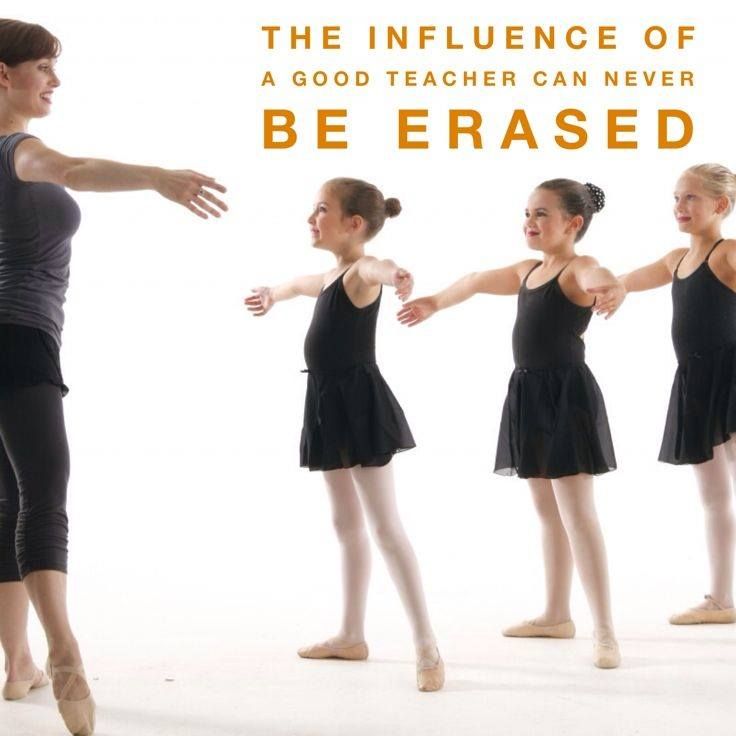
Scientists say that you can teach a baby to dance from birth , and turn on music even earlier: being in the mother's tummy, the baby hears and remembers everything.
smailik.me
Take your baby in your arms (possibly in a sling) and smoothly dance to calm music with him. Soon you will notice that he likes it, he will start asking you to do it as soon as he hears the music.
dobriy-sling.ru
After six months you can learn to clap your hands to the beat of the music. Many children themselves begin to move their legs or shake their heads to the music.
At the age of 1.5-2 years you can add several exercises that are performed to the music:
- Join hands with mom and dance.
- Spin around.
- Hold on to each other and "ride the train".
- Shrug.
- Squat.
- Swing in different directions.
- Jump in place.
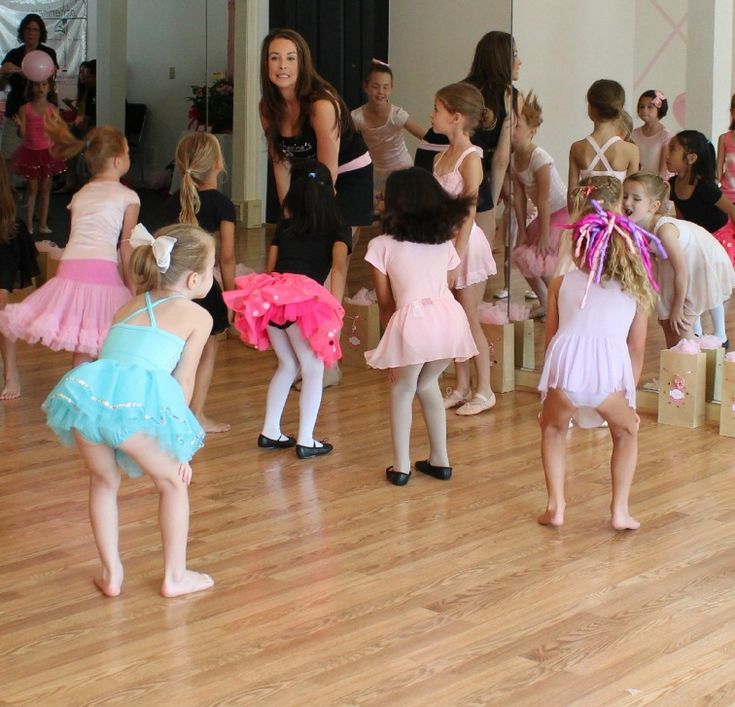 You can call it the "dance of the little sparrow."
You can call it the "dance of the little sparrow." - Raise handles, etc.
At the age of 2.5-3 years a child can already combine some exercises and perform a certain sequence of actions to the music, falling in time with:
- Stomp in place and clap your hands.
- Stomp on the spot and sway.
- Put your hands on your belt and turn alternately in different directions.
- Jump alternately on different legs, hands on the belt.
- Step forward, turn.
- Step back cotton.
- Side step, jump, etc.
mom.life
You can invent a sequence of actions yourself, based on the selected musical repertoire. Connect your imagination, add bright ribbons, hats or scarves to the dance, imitate the birds and wave your “wings”, shake your head like an elephant ... Dance with your child and show how great it is to spin with your baby’s favorite toy. Tap your spoons to the beat of the music. By the way, this can be done even while you are preparing dinner.
Of course, at the beginning the child will not have time to perform all the actions and fall in time with the music, he will get confused and forget the sequence, but over time you will notice how the sharp dance movements of the little one will begin to turn into smooth ones, the baby will begin to perform more and more complex actions.
If your imagination has run its course, you can find many videos on the Internet on how to teach a child to dance at any age. For the little ones, there are even special children's nursery rhymes that will not only help teach a child to dance, but also have fun. Remember at least “Dance of the Little Ducklings”, “Songs with Mom” by Zheleznova.
Teaching a child to dance: tips and tricks
www.joy-club.ru
1. The main thing is that the process of learning to dance should be fun.
2. Choose an upbeat song that your child likes.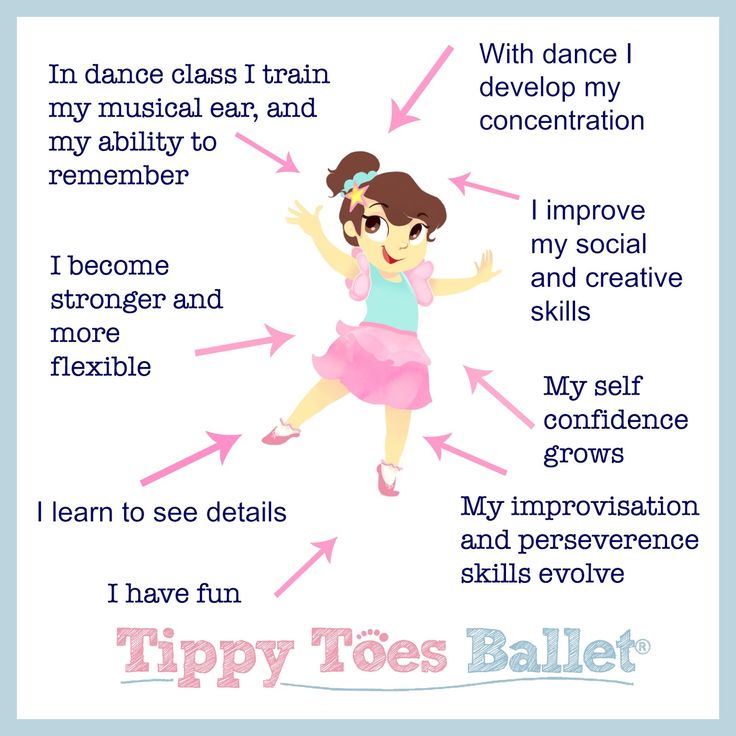
Active kids usually like fast music, and quiet kids will like a calm melody. Songs from cartoons that can be downloaded from the Internet, or Russian folk songs will go with a bang. And before going to bed it is better to put calm melodies, for example, classics.
3. Don't make the sound too loud to avoid hurting your baby's ears.
4. Match actions to the rhythm so that the child learns to feel the music.
5. There is nothing wrong with the fact that the child refuses to perform the given movements, but invents his own. Let him experiment.
6. Make sure that the baby does not spin in place for too long. Don't play fast songs right before bed.
7. Make room for dancing to avoid injury. If the room is crowded, move the furniture, remove everything that might interfere.
8. Make the movements more difficult as you master the previous ones.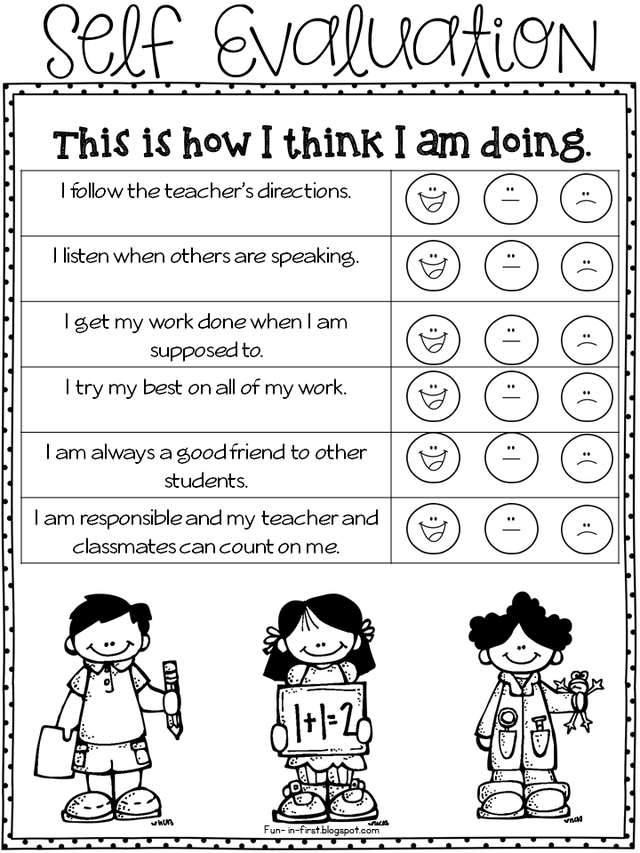
9. Watch your baby and repeat the movements he likes more often.
10. Praise your child, even if he does not succeed! Clap your hands after each song, thus encouraging the crumbs.
11. If the kid is not immediately in the mood for dancing, do not despair, try to show an example of how fun and cool it is to dance.
12. If the child is not in the mood, postpone dance lessons for a while.
How to choose a circle to teach a child to dance?
Children aged 3-4 are willingly accepted into various dance sections, your child will probably be taught to dance there, and the skills that the kid has already received by dancing from early childhood at home will not go unnoticed. The main thing is that the child likes to dance.
puppy.com.ua
1. Pay attention to the training program: it should be varied. In addition to classical choreography, it is desirable to instill musical taste and develop plasticity.
2. The teacher must win the trust and sympathy of the child.
3. Costume and theatrical performances are useful to broaden the child's horizons, and performances on stage will help to become more confident and bold.
Dancing is a great way to deal with the indefatigable energy of the little one. But there are children who are modest, quiet and sedentary, while being non-musical and non-plastic by nature. For such children, learning to dance can seem like a real torment. If your child likes calm and painstaking activities, then perhaps he should find another hobby group, and dancing will become home entertainment according to his mood.
The main thing in early childhood is not to discourage the baby's desire to move and dance, not to laugh at his clumsy movements, but to praise and cheer him up. The ability to dance and move to music, even at home with loved ones, will have a positive effect on the study of your body, on the development of self-confidence, and later on ease of communication with other people.
